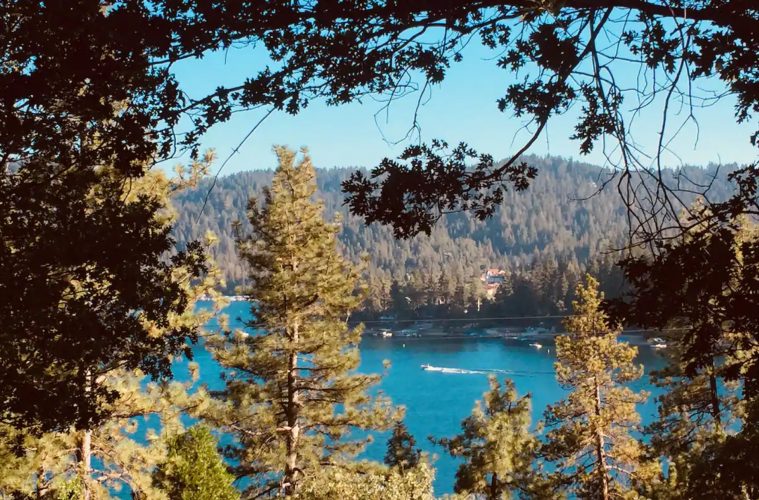Size is an essential factor that you need to consider when you purchase a camping or backpacking tent. You would want to invest in a temporary shelter that offers comfortable space, durability, and conveniently lightweight but surely won’t cost you a fortune.
Whether you’re a newcomer, seasonal camper, or an expert, you know how important it is to have a shelter in the wilderness. You don’t just invest in something that covers your head when it’s hot, or a sudden downpour occurs. 2-P tents are an excellent option, but sizes vary for every manufacturer and model.
How do you determine which tent is best for you? What features should you look for? Are there aspects that need to be covered to find the perfect temporary shelter while outdoors efficiently?
How Big Is A 2-Person Tent
Backpacking tents and camping tents have some similar features, but both are equally different. Err, confusing? Absolutely. But let’s clarify this once and for all.
If you’re camping with an RV, then you won’t ‘really’ feel the weight of deciding what’s the best tent to purchase, either for camping or backpacking. Here’s a trick,a two person tent is the best option if you’ll be going with a companion for an adventure. It would help if you considered how many people will need a comfortable temporary shelter when it’s about time to sleep after a long and tiring day.
It’s not conveniently comfortable to squeeze all your stuff inside the tent and restrict you from moving and relaxing. You need some space, enough to secure your camping gear, and allow you to rest.
There are various tent sizes available to meet individual or family needs. But let’s say you’ll be going for an adventure with a loved one or a friend. Camping tents for two varies in measurements. Some are spacious and offer above average on height, while others aren’t.
A perfect two-man tent must be about 230 x 160 cm and about 100 cm in height. However, you need to be mindful of your frame and size when choosing the perfect tent to meet your preferences and demands.
Purchasing a smaller tent has tons of benefits, including:
- Quick and easy setup for your convenience
- Easy to transport with as they are lightweight.
- Small tents are cheap compared to getting bigger-size tents
- Small tents are also great for kids to start being independent or feel more liberated when outdoors.
Essential Factors To Consider When Choosing The Right Tent For You
Investing in a good quality tent varies on individual needs and how often you will be using it. Not every camping essentials are manufactured the same way, and no two campers have similar needs. Most camping tents for two can accommodate two regular-size sleeping bags and can be tight if you’ll include your camping gears inside.
You may opt for a larger size and invest with high-end tents if you’re an outdoor enthusiast. On the other hand, if you’re a newcomer, know that tents are one of the ten essential camping items to take. Here’s what to check when buying a tent:
- Usability
Before you purchase a tent, you need to identify how often you’ll be using it, and will it be a living space to shelter, not just yourself but the gears you’ll be packing for the trip? For you to conveniently move and make the most of your tent, you can go for an extra size higher to provide convenience while outdoors.
- Materials + Season
The materials used on your tent determine its durability and efficiency to keep you warm, safe, or comfortable. Next is to check whether the tent is 4-season or not. Tent poles are made with carbon fiber, aluminum, and fiberglass. For tent longevity, always go for aluminum or carbon fiber tent poles.
- Identify The Perfect Size
To find the perfect tent size to meet your needs, you have determined how many people need temporary shelter. You will need to reconsider camping items and backpacks that need to be secured while outdoors. The length of your camping expedition will also affect the tent size you’ll be taking with you.
- Configurations and Extras
Camping tents offer additional features such as storage pockets, gear lofts, vestibules, rainfly, and more. Rainfly secures you and your camping essentials from getting all soaked up during rain or sudden downpours and keeps you warmer on chilly weather conditions.
Double-wall camping tents prevent condensation off your sleeping space. With this, you can also check tents that include tarp or footprints to protect it from wear and tear underneath.
- Capacity
Most tent manufacturers classify the size of the tent with the number of adults it can accommodate inside. Either you go for two, three, or four-person tents, that determines how much an adult can perfectly fit with gears close to them when inside the tent.
- Sleeping Area
Plan sleeping arrangements and check whether you’ll go for a sleeping bag or inflatable mattress. Identify which one is most suitable and convenient to carry or set up on your outdoor adventures.
Conclusion
2-man tents vary on their actual size from different manufacturers. While there is a standard size, you can opt to check with a candidate camping or backpacking tent. Individual needs and preferences, usage, frequency of use, and materials are a few factors you can check to find the best tent to secure you once outdoors.

